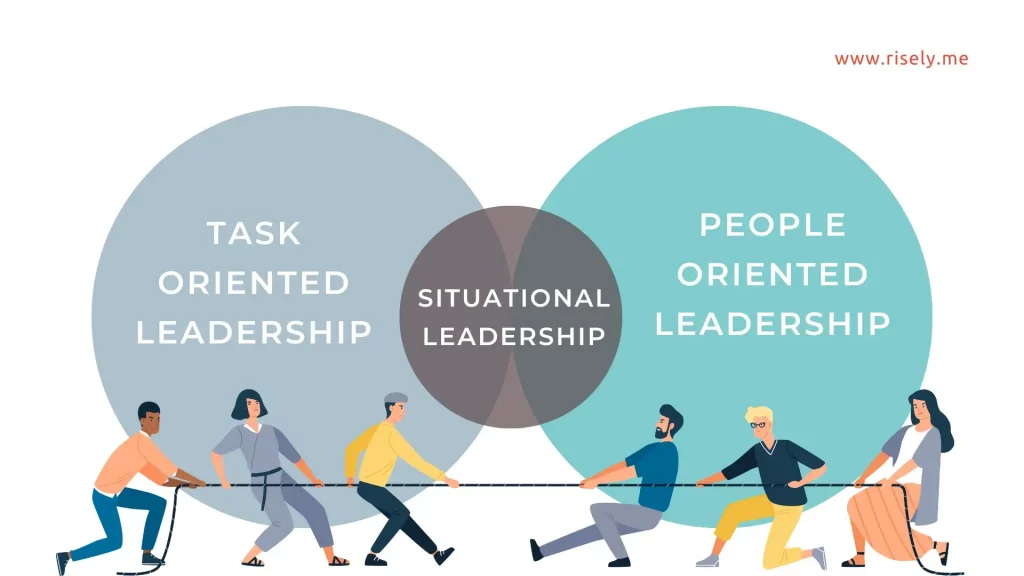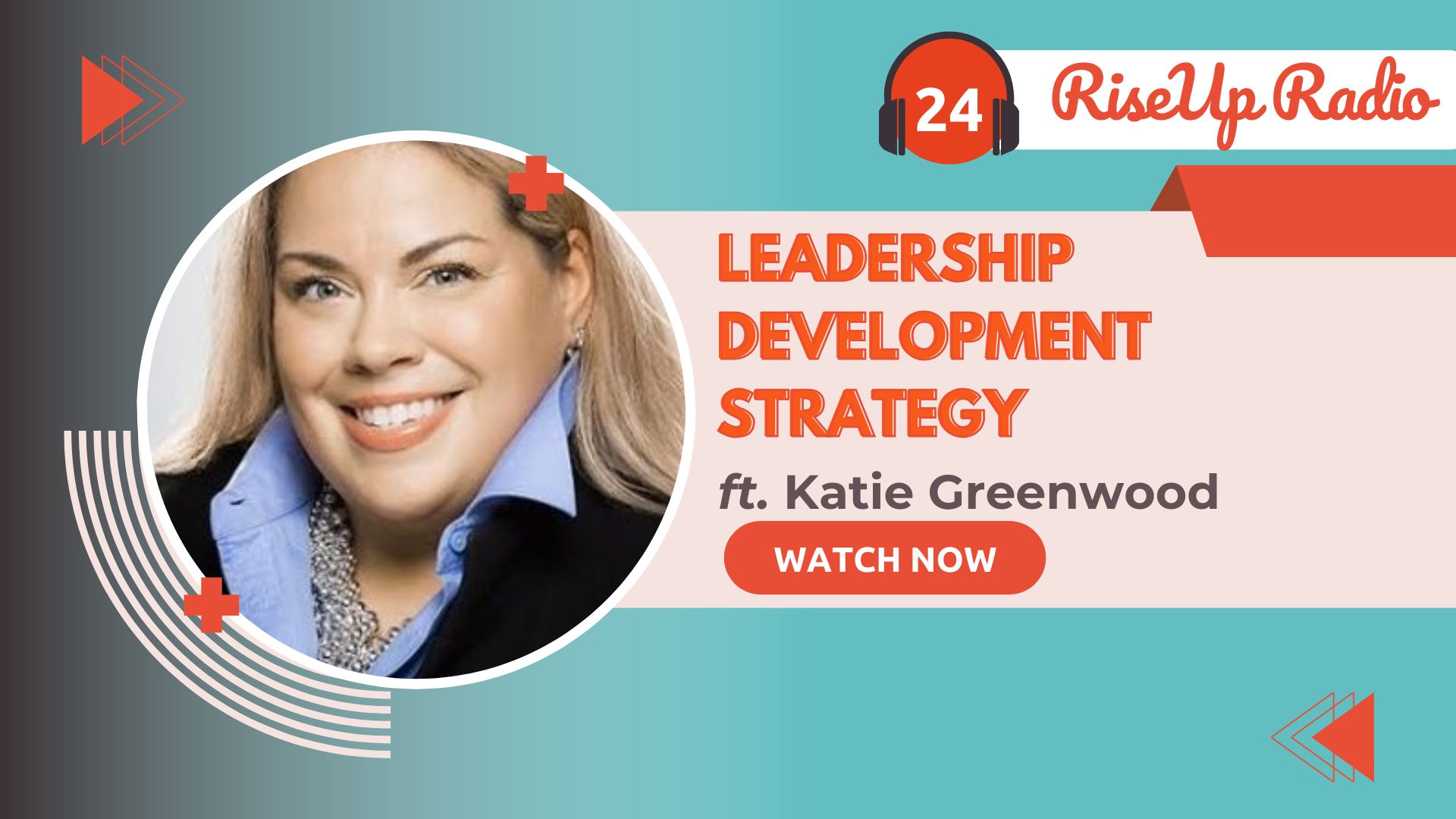How To Balance People Oriented Vs Task Oriented Leadership?
Finding the right balance between these two leadership styles is essential for creating a productive work environment and achieving short-term and long-term goals. It requires understanding the strengths and weaknesses of each style and adapting them to the specific needs of the team and organization. In this blog, we will explore the key characteristics of task-oriented and people-oriented leadership, the benefits and drawbacks of each style, and strategies for balancing both approaches.
In business, leadership is crucial in guiding and managing teams toward achieving organizational goals. However, there are different leadership styles, each with its focus and approach. Two common styles are task-oriented leadership and people-oriented leadership. The idea of balancing people and tasks at different priority levels comes from behavioral theory of management. Task-oriented leaders prioritize completing objectives and meeting deadlines, while people-oriented leaders prioritize the well-being and development of their team members.
What is People-Oriented Leadership?
People-oriented leadership is a leadership style that prioritizes the well-being and development of team members. It emphasizes building positive relationships with employees, creating a supportive and collaborative environment for your team, and focusing on the individual needs of team members. This style of leadership recognizes the importance of emotional intelligence and aims to create a positive team culture where employees feel valued and motivated. People-oriented leaders are skilled at understanding and empathizing with their team members, and they prioritize their growth and development.What are the core features of a people-oriented leadership style?
- Building strong relationships with team members
- Fostering a positive and inclusive work environment
- Actively listening to team members
- Valuing team members’ ideas and opinions
- Creating a supportive and empowering culture
- Promoting employee growth and development
How does a people-oriented approach help you?
People are the key tenets of any team. How can focusing on people over progress bars help you? Let’s note a few key benefits of people-focused leadership:- Increased job satisfaction: When your team members feel valued, heard, and supported, their job satisfaction levels increase. People-oriented leaders prioritize the well-being and happiness of their team, leading to higher levels of job satisfaction.
- Positive team culture: A people-oriented approach creates a positive team culture where collaboration, trust, and respect thrive. It fosters a sense of belonging and camaraderie among team members, leading to higher productivity and overall team performance.
- Strong company culture: As a people-oriented leader, you set the tone for the company’s culture. By prioritizing the well-being and development of employees, you can create a culture that values and supports its workforce. It leads to a positive reputation and attracts top talent to the organization.
- Increased employee engagement and retention: When employees know they are valued and supported, they are more 2x likely to be engaged in their work and committed to the organization, as suggested by Gallup’s research. It saves your team from the worries of constant turnover and hiring cycles.
What is Task-Oriented Leadership?
Task-oriented leadership is a style that focuses on completing objectives and meeting deadlines. It emphasizes efficiency, productivity, and the achievement of specific goals with your team. Task-oriented leaders are highly organized and detail-oriented, and they prioritize strict adherence to timelines and processes. They set clear expectations and assign specific tasks to team members, ensuring that everyone knows what needs to be done and when. This style of leadership is often associated with autocratic leadership, where the leader makes decisions without much input from the team.What are the key features of a task-oriented leadership style?
- Prioritize completing objectives and meeting deadlines
- Excel at setting clear expectations and ensuring alignment toward goals.
- Make decisions with minimal input from the team
- Value efficiency and productivity above all else
What benefits can a task-focused leadership style give you?
From the get-go, task-focused management might sound extreme. But, task-oriented leadership offers several advantages when applied appropriately. These advantages include:- High efficiency: Task-oriented leaders prioritize efficiency and productivity, ensuring that tasks are completed promptly and effectively. It leads to increased overall efficiency within your team.
- Clear direction: You can provide clear directions and expectations, reducing ambiguity and ensuring everyone in your team is working towards the same goal.
- Smooth transition to the next project: Task-oriented leadership gives you the freedom to plan and organize tasks, facilitating a smooth transition to the next project or objective.
- Improved operational effectiveness: Task-oriented leaders can improve overall organizational effectiveness by focusing on task completion and operational efficiency.
Other Interesting Reads
People Oriented Vs Task Oriented Leadership: Which way manager?
Your leadership style can change a lot. Picture this: client requirements changed at the last moment, and you suddenly work with a tight deadline. If you are a people-oriented leader, you will start by explaining what happened and how things need to proceed. In the next step, you will consult the people and set up a plan to get things done in time. One of your team members has an idea to do things quickly, and you love it. However, another team member said they could not join for extra hours due to personal reasons. And that’s alright. So things get started with this new innovative approach, and the whole team puts in their best effort. On the other hand, how do you think the same situation will unfold with a task-oriented leadership style? If you noticed in the situation above. There was a lot of people focus. People were informed and consulted. People were heard and valued. People worked together toward the goal. Playing this out with task-focused managers would be different. First, you will focus more on the objective. The goal needs to be met, the method is set, and actions are defined. Given that changes are last minute, you will take time to set expectations for your team in the current context and provide directions to manage time and effort better. The pivot of everything here is the task, and the people are contributing toward it.See the difference?

How People-Oriented Leadership Influences Team Dynamics?
People-oriented leadership has a significant influence on team dynamics and overall performance. When you prioritize the well-being and development of your team members, it positively impacts team morale and motivation. Employees feel valued, supported, and engaged, increasing job satisfaction and productivity. But make sure that priorities don’t get lost amid this. People-oriented leaders foster a collaborative and inclusive work environment where teamwork and cooperation thrive. It improves communication, trust, and problem-solving within the team, resulting in better overall team performance.What is The Effect of Task-Oriented Leadership on Operational Efficiency?
Task-oriented leadership significantly impacts the operational efficiency of your organization. By prioritizing strict deadlines and task completion, you can create a sense of urgency and ensure that projects are completed on time. It can lead to increased operational efficiency and productivity. However, excessive focus on tasks and deadlines can hinder innovation and creativity within the organization. Task-oriented leaders may be less open to new ideas or approaches that deviate from established processes. It can result in a lack of innovation and a stagnant work environment. Balancing task-oriented leadership with a more flexible and innovative approach is crucial for maintaining operational efficiency while fostering creativity and growth.How to Balance People-Oriented and Task-Oriented Leadership?

Know your team
Assessing the needs of your team and organization: Understanding your team’s and organization’s specific needs allows you to tailor your leadership approach accordingly. Some team members may thrive under a task-oriented leadership style, while others may benefit more from a people-oriented approach. Additionally, understanding your organization’s values and goals enables you to align your leadership style with the overall mission and culture. Read more: How To Know Your Team Better? 10+ Questions For ManagersIntegrate both leadership styles
Combining elements of both people-oriented and task-oriented leadership helps you create a well-rounded approach that prioritizes both productivity and employee well-being. You can do it in many areas. For example, balancing feedback that focuses on task completion and personal growth allows you to address performance issues while supporting individual development.Don’t hold fast to any style
Leadership is a very dynamic area. In one instance, you might need to deliver exceptional decision-making skills and make design choices in the next. Consider the context and adapt your leadership style to the situation. Not every set of people and places are made alike, so why should your approach be?Develop your leadership style
Developing your own leadership style is essential for balancing task-oriented and people-oriented approaches. Start by conducting a self-assessment to identify your natural leadership orientation. You can do this with assessment tools measuring leadership skills like Risely. Once you have identified your strengths and areas for improvement, you can focus on training sessions and development resources tailored to enhance your leadership skills. These resources may include workshops, seminars, and coaching sessions that provide strategies and techniques for effective leadership.Conclusion
In conclusion, balancing people-oriented and task-oriented leadership is crucial for fostering a harmonious work environment and achieving organizational goals effectively. By understanding the key characteristics and benefits of each leadership style, you can assess the needs of your team to integrate both approaches successfully. Developing your leadership style through self-assessment tools and training resources empowers you to lead with a holistic approach that values people and tasks. Embracing a balanced leadership style will drive organizational success and create a culture of collaboration and achievement.Assess your core leadership skills for free!
Are you ready to adapt and make your team win big? Find out now.
Other Related Blogs
Building an Ultimate Leadership Development Action Plan
How to Build a Leadership Development Action Plan? Having a strong Leadership Development Action Plan is more critical than ever in today’s evolving business world. Whether you’re looking to drive…
Leadership Journey Examples on the RiseUp Radio Podcast
Leadership Journey Examples on the RiseUp Radio Podcast Leadership isn’t a destination – it’s a journey filled with twists, turns, and transformative moments that shape not just careers, but entire…
What is Immersive Learning? A New Era in Education
In this blog, you’ll learn what is immersive learning and how it is changing training, increasing engagement, and influencing the future of workforce development. … Read More
What are Learning Designs? All You Need To Know
This blog explains what learning designs are in depth while also covering it’s key components. It tells you about the process involved in creating a good learning design along with…


